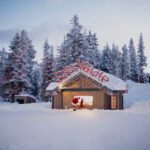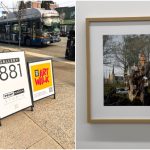Mushrooms in Stanley Park
 This post has been contributed by Michael Murray, Communications Volunteer with the Stanley Park Ecology Society (“SPES”). I have been following SPES since I moved into the West End over a decade ago and I have been a member for four years. I wanted to offer the team an opportunity to share their news, events, and work so I have created “SPES Saturday” where they contribute and share stories with my audience once a month.
This post has been contributed by Michael Murray, Communications Volunteer with the Stanley Park Ecology Society (“SPES”). I have been following SPES since I moved into the West End over a decade ago and I have been a member for four years. I wanted to offer the team an opportunity to share their news, events, and work so I have created “SPES Saturday” where they contribute and share stories with my audience once a month.
The Fungus Among Us
Mushrooms in Stanley Park
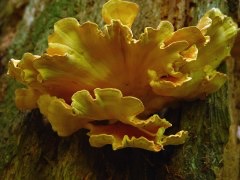
Chicken of the Forest on a tree
in Stanley Park. Photo by Peter Woods
The fungus is definitely among us, and this fall is a great time to get out and discover the vast array of mushrooms that Stanley Park has to offer. From the edible to the poisonous, over 60 different species of fungi have been observed in the Park and offer amateur mycologists a great chance to get out and explore amazing specimens.
One of tastier mushrooms found in the Park at this time of year is Chicken of the Forest or Laetiporus sulphureus. It is aptly named because when cooked it resembles and tastes like chicken. Often found in the trails around Beaver Lake, this yellow orange mushroom grows in wide shelves on the bark of conifer trees and can measure up to 25 cm in length.
Chanterelles are another sought after mushroom that grows in Stanley Park, often found amongst the base of Douglas fir trees. They grow between 10 and 15cm tall with a yellow and white stock with fork- like edges.
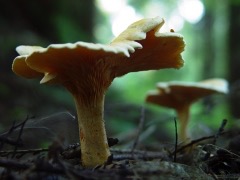
Chanterelles in Stanley Park.
Photo by Peter Woods
These elusive mushrooms are considered a delicacy and are extremely nutritious with high levels of Vitamin C and D. They are most abundant between July and October, so keep an eye out next time you’re walking the trails. But, control yourself: collecting any plants in city parks, including Stanley Park, is forbidden. You will have to content yourself with the thrill of the hunt.
Another common mushroom found in the Park is Amanita muscaria or Fly Agaric. These are the toadstools of fairytales with their white stocks and vibrant orange and red caps flecked with white and yellow.
Amanita muscaria can be found growing amongst both coniferous and deciduous trees and are most prevalent during the summer and fall months. While they may look appealing, they are considered toxic having unpleasant psychoactive effects on those who consume them.
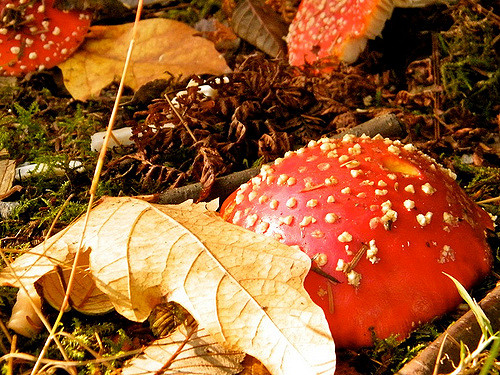
Amanita mushroom in Stanley Park
With fall just around the corner it is a great time to get out and explore the various species of mushrooms that are found throughout Stanley Park. For some expert guidance, consider SPES’ November mushroom walk and workshop. Check out their November Events Calendar soon to learn more about these programs and to register.
Special thanks to Robin Kort for her invaluable mushroom information!




